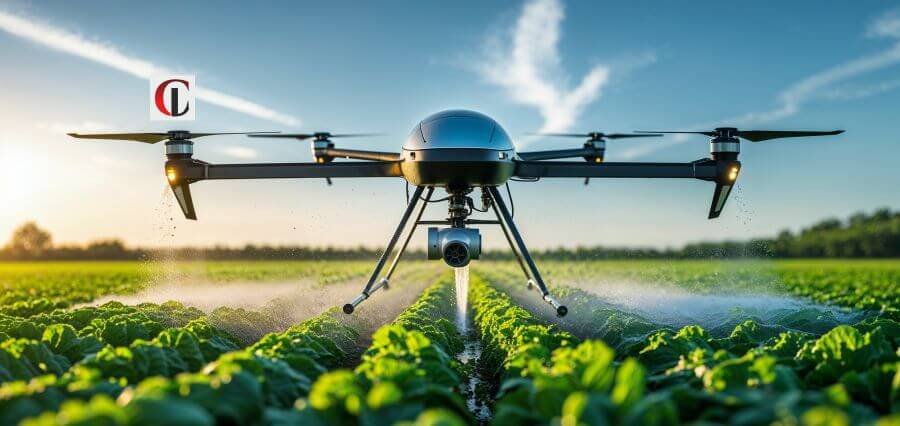Precision farming is not a fad; it is the future of productive, sustainable agriculture. With the growing population around the world and climate change yielding increasingly more pressure, the need for more intelligent, productive types of agriculture has never been greater. Precision agriculture leverages data, technology, and science to optimize crop yields, reduce waste, and direct resources with exact precision. Adjusting to this future involves acclimating to new tools and re-emphasizing the older methods of farming in order to stay competitive as well as green. Realizing the path to successful implementation of precision agriculture requires a quantum leap into the technologies available, the data-driven decision-making processes, and the associated change in mindset.
Utilizing Smart Technologies in the Field
Among the major pillars of precision agriculture is the application of sophisticated gadgets such as GPS devices, IoT sensors, drones, and satellite imaging. These tools provide farmers with real-time insights into soil conditions, crop health, moisture, etc. In opening up the potential for working with fields on a site-specific basis, technology helps to deliver the right amount of water, fertilizer, and pesticides to exactly where and when they are needed, and thereby reduce wastage and increase yield.
Shifting towards a technology-based agricultural sector means investment in equipment, of course, but also training and support infrastructure. There has to be some base level of training which farmers acquire to understand the functioning of these devices as well as how one can read and use the data generated by them. Governments, educational institutions, and business enterprises have to come together to provide balanced resources, funds, and training programs to enable transition.
Intelligent Decisions with Data
Data analysis is at the heart of precision agriculture’s efficiency. By long-term data collection and analysis, farmers can identify trends and make anticipatory decisions. For example, predictive analytics can forecast diseases breaking out through weather patterns and trend history to allow for anticipatory action in order to salvage entire crops.
But data access is useless if farmers cannot do anything with data other than to accept it passively. That involves friendly software platforms which will take unprocessed data and process it into actionable advice that farmers can interpret. Those platforms will need to be compatible with the literacy levels and skills of different farming communities, so the benefits of data farming do not go to large farming only.
Sustainability as a Fundamental Principle
Precision agriculture is sustainable in itself. It allows for optimal utilization of natural resources by preventing water and fertilizer from being used except where they are most necessary. This saves the surrounding ecosystem, minimizes runoff, and generally benefits the environment for the better. By reducing the application of drizzle chemicals, farmers can also cut the carbon footprint of their farms.
For sustainability to take hold in a meaningful way, farmers must be encouraged toward long-term ecological thinking. That entails adopting crop rotation, cover crops, and regenerative techniques alongside high-tech methods. All of these taken together will restore soil quality and diversity, rendering agriculture more climate-resistant.
Building a Competent and Resilient Workforce
The future of precision agriculture is as much in technology as it is in technicians who operate it. As agriculture becomes increasingly computerized, there exists a need for individuals with agricultural and technical backgrounds. There has to be educational reform in the form of the inclusion of agri-tech courses in vocational training schools and colleges.
To be achieved are inclusivity and diversity. In order for this to be so, training programs must be extended to smallholder farmers and rural communities that may not be in a position to access formal education. Mobile training units, e-learning platforms, and community training workshops can be used to bridge the gap, and precision agriculture can be made accessible to farmers from all levels of society and utilized.
Policy Support and Collaborative Ecosystems
Governments need to be in the forefront to facilitate adoption of precision agriculture. The policy interventions need to be updated to allow innovation, provide subsidies or tax credits on taking up technology, and facilitate fair access to digital infrastructure. This includes expanding rural broadband internet, which is a prerequisite for most technologies of precision farming to be useful.
Apart from policy, there also needs to be cooperation between the parties. Public-private partnerships may speed up innovation, while farmer cooperatives and agribusiness networks may offer access to costly machinery and data analytics services. With a collaborative ecosystem, all the stakeholders along the agricultural value chain can enjoy and share in the transformation.
Conclusion
Precision agriculture is a bold move towards the future direction of food growing, governance, and harvesting. It’s not just a shadow of higher yields and income, but a path to higher environmental stewardship and food safety. Farmers, policymakers, educators, and technology providers must unite to bridge the gap, develop skill sets, and embrace an innovation mindset in order to stake their claim in the future. As the world community is faced with complex agricultural issues, precision agriculture presents a vision of a smarter and more capable agricultural future.

